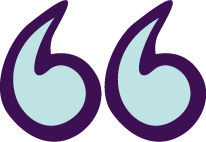Your child’s first NDIS Plan can be confusing. It takes time to understand what’s in the plan and how you can use it. This guide explains some of the new terminology that is helpful to understand.
Types of funding support
There are three types of funding that may be included in your child’s Plan:
1. Capacity Building
This can be used for therapists, including speech therapy, occupational therapy, physiotherapy or psychology. These therapists work with you to help your child develop in areas such as sleep, communication, play, toileting, and social skills.
2. Core
This can be used for support workers, who can help your child with their everyday care. It can give you a break and give your child time with another adult who helps them join in everyday children’s activities like going to the playground or playing at home. Support workers can help with routines and activities recommended by therapists.
3. Capital
This can be used for equipment that is essential for your child’s everyday life, e.g., buying a wheelchair, hearing aids, or speaking devices. It can also include home modifications such as railings, ramps, and shower modifications. If a support is listed as “quote required”, it means that extra information such as quotes, and specialist reports will be necessary before funding is allocated in your child’s Plan.
Managing your child’s NDIS Plan
There are three ways to manage your child’s NDIS Plan: self-managed, plan-managed, and
NDIA-managed.
1. Self-managed
This is when you are responsible for the management of your child’s NDIS funding. You track your spending and do the financial reporting. You will need to keep records of invoices and payments and establish how you will pay for the service e.g., pay for the support first and then claim through the NDIS.
2. Plan-managed
This is when a Plan Manager pays the invoices, helps you keep track of the NDIS funds, and does the financial reporting for you. You can ask for Plan Management at your child’s planning meeting.
3. NDIA-managed
This is also known as Agency Managed. The National Disability Insurance Agency (NDIA) pays your service providers directly on your behalf. This means you can only buy services from registered providers.
Who are Early Childhood Partners and Local Area Coordinators (LACs)?
Early Childhood Partners and LACs are NDIS partners. They are the organisations that help you apply for the NDIS and work with you to develop and understand your child’s NDIS Plan.
Early Childhood Partners
Their role is to help families with children aged 0 to 8, to access early support and early intervention through the NDIS Early Childhood Approach. They can help you develop your child’s NDIS Plan and answer any questions you have about this.
Local Area Coordinators
They have a similar role but work with children aged 9 years and older. LACs help you to use and understand your child’s NDIS Plan. This includes those not receiving support coordination funding. LACs should also be part of a plan review request.
NDIS portal (myplace)
The NDIS has developed a participant portal called myplace. It enables you to make payment requests and manage information about your child’s Plan details and budget. To access myplace, you need a myGov account and an activation code from the NDIS if this is your first time with an NDIS plan.
If you are self-managed there are two ways to pay for your child’s support using NDIS funding:
1. Payment Request and Provider Payment
When you receive an account, invoice, or timesheet from a service provider, you can make a Payment Request. This can be done online using myplace, the NDIS portal. Money from your child’s Plan budget will be deposited into your nominated bank account within 24-48 hours, allowing you to pay your provider.
2. Provider Payment and Payment Request
This is where you pay your provider using your own money and get a receipt. Afterward, you can make a Payment Request to have the funds from your child’s NDIS Plan budget refunded into your nominated bank account, usually within 24-48 hours.
Cancelling a service
If you cancel an appointment with less than 7 days notice you usually still have to pay for that appointment. You can use your child’s NDIS Plan to pay the cancellation fee.
If you cancel an appointment, you can ask your child’s therapist to work on something that does not need your child to be there e.g., a social story for an upcoming activity, a visual schedule to use at home or at kindergarten, a list of activities for you to play with your child at home, a one-page report to share with your child’s educators.
Service agreements
A service agreement is when you and a provider agree on what support or therapy service you would like for your child. Service agreements help you and the provider to be clear about your expectations of the support your child will receive and how it will be provided.
Support coordination
Support coordination can be included in your child’s NDIS Plan if you need extra help implementing the Plan. Support Coordinators help you to understand your child’s Plan and find services.
To get support coordination you must ask for it in your child’s planning meeting and explain why you need it. For example, if you have multiple children with NDIS plans, you are new to Australia, you don’t have access to a computer or technology devices to search online for supports, you have your own disability or health condition, or if your child has a complex disability and medical needs.
Useful links
NDIS Participant Service Guarantee
NDIS information for participants and families
NDIS information in other languages
NDIS Quality and Safeguards Commission
NDIS The early childhood approach for children younger than 9
How the NDIS can help your child under 7 years – Easy English






